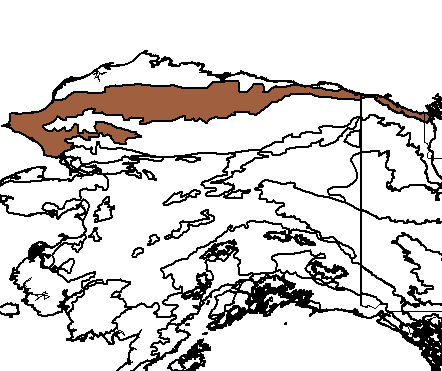
Foothills, n. of Brooks Range, Alaska (c) 2005 Natasha Sherman
Bioimages home (click on an image to enlarge)
view
this page in its intended navigation context
Arctic foothills tundra (WWF
ecoregion NA1104)

Foothills, n. of Brooks Range, Alaska
(c) 2005 Natasha Sherman

Source of bioregions data:
Olson, D. M. and
E. Dinerstein. The Global 200: Priority ecoregions for global conservation. (PDF
file) Annals of the Missouri Botanical Garden 89:125-126.
Distinctiveness (1=highest,4=lowest): 1
(globally outstanding)
Top-level predators remain in this ecoregion, which provides important denning
sites for brown bears and wolves. It is an important migration corridor
for caribou herds.*
Conservation Status (1=most endangered, 5=most
intact): 4 (relatively stable)
Currently this ecoregion is one large, intact block of habitat. However
coal and mineral development in the western half could cause severe and
permanent damage.*
Some views from the ecoregion

musk oxen, foothills north of Brooks Range
(c) 2005 Natasha Sherman
hires
* Ricketts, T.H., E. Dinerstein, D.M. Olson, C.J. Loucks, et al. (1999) Terrestrial Ecoregions of North America: A Conservation Assessment. World Wildlife Fund - United States and Canada. Island Press, Washington, D.C. pp. 337-340.